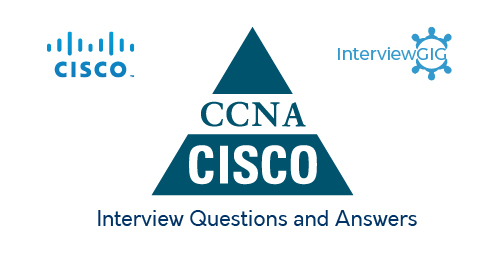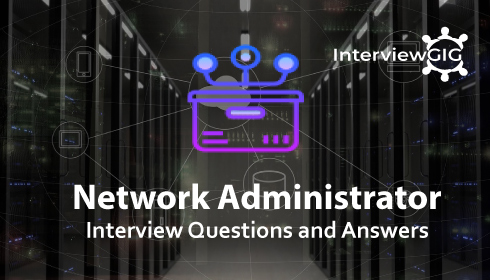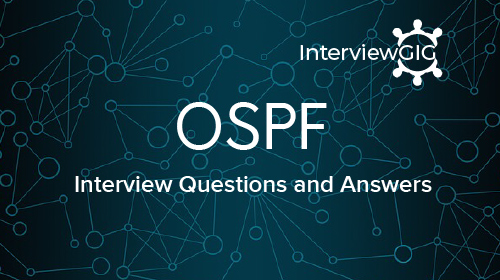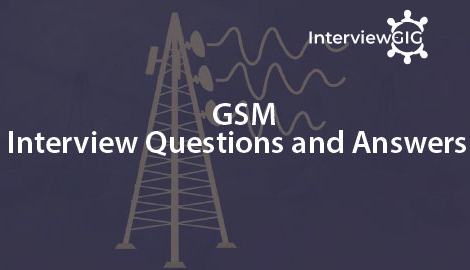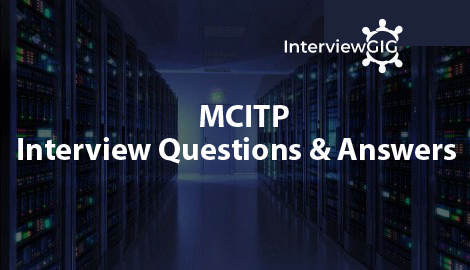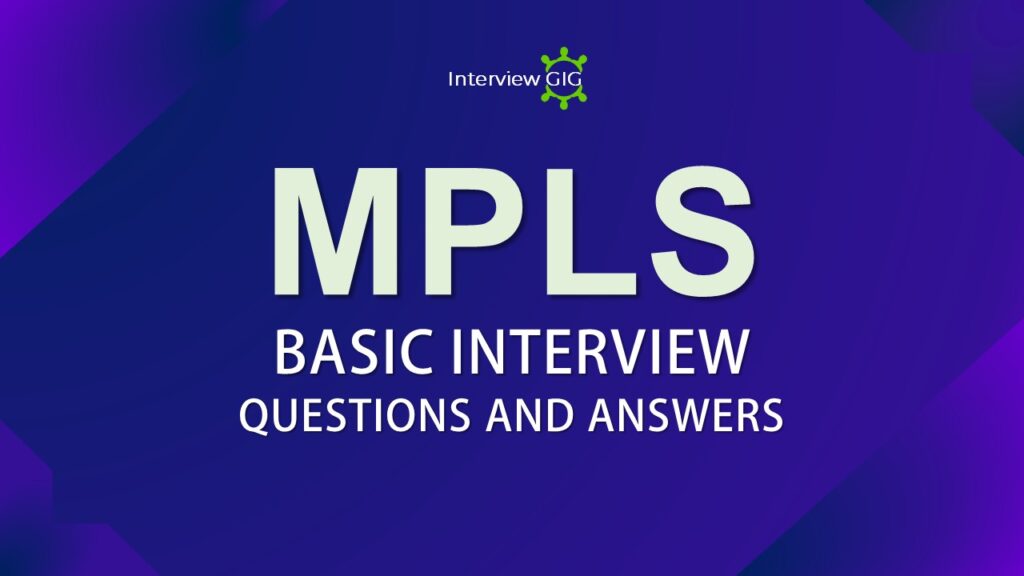What is the difference between switching and routing?
The Routing moves a telephone call or a letter to the access layer. Switching performs the final delivery. When the address is not used in routing, a switching decision is made.
What is the difference between RIP and OSPF?
RIP broadcast its routing table after each 30 second while OSPF only update those entries which are missing the neighbor routing table.
What is the difference between bridges and switches?
Bridges and switches function the same way; the only difference is in how they are implemented. Bridges are implemented by software and usually have a couple of network ports. Switches are implemented in hardware by ASIC chips and have many ports.
What are three types of LAN traffic?
Unicasts – intended for one host.
Broadcasts – intended for everyone.
Multicasts – intended for an only a subset or group within an entire network.
What three devices are used to segment a LAN?
The three devices that are used to segment a LAN are:
What are unicast frames?
Unicast frames are the most common type of network traffic. A unicast frame is a frame intended for only one host. The only station that processes this frame is one station that has its own MAC address in the destination portion of packet.
What is Interior Gateway Routing Protocol (IGRP)?
IGRP is a Cisco proprietary distance vector routing protocol. IGRP has a default hop count of 100 hops, with a maximum hop count of 255. IGRP uses bandwidth and line delay as its default metric, but it can also use reliability, load, and MTU.
How do you enable IGRP on a Cisco router?
The way you enable IGRP on a Cisco router is similar to the way you enable RIP, except you specify IGRP as the protocol and add an autonomous system number.
For example:
RouterA(config)# router igrp 10 (10 is the AS number)
RouterA(config-router)# network 192.168.0.0
RouterA(config-router)# network 192.168.1.0
RouterA(config-router)# network 192.168.2.0
What is the Spanning-Tree Protocol (STP)?
STP is a loop-prevention bridge-to-bridge protocol. Its main purpose is to dynamically maintain a loop-free network. It does this by sending out Bridge Protocol Data Units (BPDUs), discovering any loops in the topology, and blocking one or more redundant links.
What is path cost?
Path cost is a calculation to determine the link’s bandwidth. It is a value assigned to each port that is based on the port’s speed.
What is the STP blocking state?
When a switch starts, all ports are in the blocking state. This is to prevent any loops in the network. If there is a better path to the root bridge, the port remains in the blocked state. Ports in the blocked state cannot send or receive traffic, but they can receive BPDUs.
What is the STP listening state?
Ports transition from a blocked state to a listening state. In this state, no user data is passed. The port only listens for BPDUs. After listening for 15 seconds (if the bridge does not find a better path), the port moves to the next state, the learning state.
What is the STP learning state?
In the STP learning state, no user data is being passed. The port quietly builds its bridging table. The default time in the learning state is 15 seconds.
What is the STP forwarding state?
After the default time in the learning state is up, the port moves to the forwarding state. In the forwarding state, the port sends and receives data.
What is STP forward delay?
The forward delay is the time it takes for a port to move from the listening state to the learning state or from the learning state to the forwarding state. The default time is 30 seconds.
How does STP maintain a loop-free network?
STP maintains a loop-free network by
Electing a root bridge
Electing a root port on each nonroot bridge
Electing designated ports
Putting in the blocking state any port that is not a root port or designated port
Describe the central office (CO)?
The CO is the telco switching facility that connects the customer to the provider’s switching network. The CO is sometimes referred to as a point of presence. It is the point where the local loop gains access to the service provider’s access lines.
What is the toll network?
All the telco switches, COs, and trunk lines inside the WAN provider’s network are the toll network.
What are synchronous links?
Synchronous links have identical frequencies and contain individual characters encapsulated in control bits, called start/stop bits that designate the beginning and end of each character. Synchronous links try to use the same speed as the other end of a serial link.
What are Asynchronous links?
Asynchronous links send digital signals without timing. Asynchronous links agree on the same speed, but there is no check or adjustment of the rates if they are slightly different. Only 1 byte per transfer is sent.
What are broadcast domains?
A broadcast domain defines a group of devices that receive each other’s broadcast messages. As with collisions, the more broadcasts that occur on the network, the slower your network will be. This is because every device that receives a broadcast must process it to see if the broadcast is intended for it.
What is HSRP?
The HSRP stands for Hot Standby Routing Protocol, is a Cisco proprietary protocol, which brings routing functionality to end devices that might be not capable of taking advantage of connections of the redundant network. The HSRP uses a pair of Cisco routers in order to work together to present the appearance of a single default virtual gateway to end devices on a LAN segment.
What is a core network?
A core network is where the entire main network lives. Without core network, the whole network cannot be run. All routers and switches are connected to their core network.
What are unicast frames?
Unicast frames are the most common type of LAN traffic. A unicast frame is a frame intended for only one host. In unicast frames, the only station that processes the frame is the station that has its own MAC address in the destination portion of the packet.
What are broadcast frames?
Broadcast frames are frames intended for everyone. Stations view broadcast frames as public service announcements. All stations receive and process broadcast frames. In large networks, broadcasts can bring the network to a crawl, because every computer must process them.
What are multicast frames?
Multicast frames address a group of devices that have a common interest. These frames allow the source to send only one copy of the frame on the network even though it is intended for several stations. Only stations that have a card that is configured to receive multicast frames process them. All other stations discard multicast frames.
What is the flooding process?
When a bridge is first turned on, it has no MAC address in its table. When a switch receives a unicast frame, it knows the source address and port from which the unicast frame came, but no entry exists in its table for the destination address. This is called an unknown unicast frame.
When a switch receives an unknown unicast frame, it sends the frame out all forwarding interfaces on the bridge except the interface that received the frame. This process is the flooding process.
What is the filtering process?
The filtering process occurs when the source and destination addresses reside on the same interface on the bridge. Because the bridge does not need to forward a frame in which the destination and source addresses reside on the same interface, it filters the frame and discards it.
What is the forwarding process?
The forwarding process occurs when a switch receives a unicast frame and has an entry of the destination address in its MAC table. The switch then forwards the frame to the interface where that destination address resides.
What is the Point-to-Point Protocol (PPP)?
PPP is an industry-standard protocol that provides router-to-router or router-to-host connections over synchronous and asynchronous links. It can be used to connect to another vendors’ equipment. It works with several network-layer protocols, such as IP and IPX. PPP provides authentication through PAP or CHAP.
What is Frame Relay?
An industry standard, Frame Relay is a switched data link layer protocol that uses virtual circuits to identify the traffic that belongs to certain routers. It provides dynamic bandwidth allocation and congestion control.
What is data encapsulation?
A PDU can include different information as it goes up or down the OSI model. It is given a different name according to the information it is carrying (the layer it is at). When the transport layer receives upper layer data, it adds a TCP header to the data; this is called a segment.
The segment is then passed to the network layer, and an IP header is added; thus, the data becomes a packet. The packet is passed to the data link layer, thus becoming a frame. This frame is then converted into bits and is passed across the network medium. This is data encapsulation Application layer — Data
Transport layer — Segment
Network layer — Packet
Data link layer — Frame
There is also the Physical Layer — Bits
What is a Data Link Connection Identifier (DLCI)?
A DLCI is a number that identifies the logical circuit between the router and the Frame Relay switch. It is the Frame Relay Layer 2 address. The Frame Relay switch maps DLCIs between each pair of routers to create a PVC. For IP devices at the end of each virtual circuit to communicate, their IP addresses need to be mapped to DLCIs.
If you are running Cisco IOS 11.2 or later, mapping is done automatically using Inverse ARP. DLCIs have local significance. Think of DLCIs as the MAC address of the Frame Relay network.
What is the committed information rate (CIR)?
The CIR is the committed information rate, by the service provider, in bits per second, at which data will be transferred. The service provider sends any data in excess of this rate if its network has capacity at that time.
What is the Local Management Interface (LMI)?
The LMI is a signaling standard between a CPE device (a router) and the Frame Relay switch that is responsible for managing and maintaining status between the devices. It is autosensed with Cisco IOS Release 11.2 and later.
What is Forward Explicit Congestion Notification (FECN)?
The FECN is the bit in the Frame Relay header that signals to anyone receiving the frame (switches and DTEs) that congestion is occurring in the same direction as the frame. Switches and DTEs can react by slowing the rate at which data is sent in that direction.
What is Backward Explicit Congestion Notification (BECN)?
The BECN is the bit in the Frame Relay header that signals to switches and DTEs receiving the frame that congestion is occurring in the direction opposite (backward) that of the frame. If switches and DTE devices detect that the BECN bit in the Frame Relay header is set to 1, they slow the rate at which data is sent in that direction.
